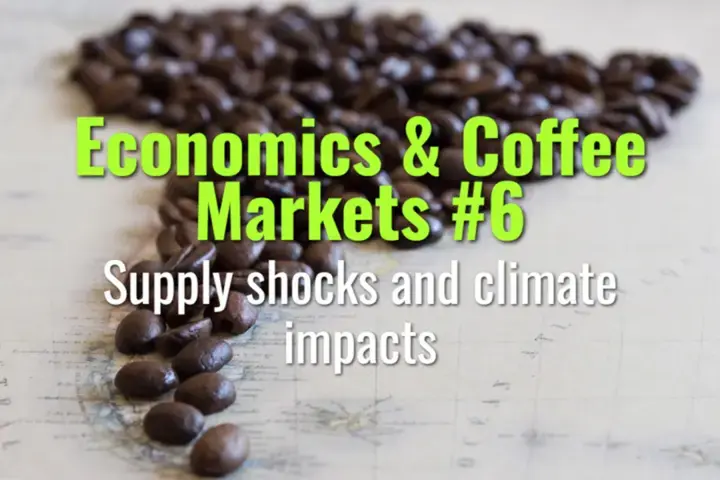Supply shocks and climate impacts
How supply shocks and climate change impacts disrupt the global coffee market, influencing availability, pricing, and long-term sustainability.
- Coffee Basics Nerds
- 2 min read
Article 6 of 12 in Economics & Coffee Markets/

What Are Supply Shocks?
- Sudden disruptions in the supply of coffee that drive volatility in prices.
- Examples:
- Frosts in Brazil (e.g., 2021 severe frost wiped out millions of bags).
- Droughts reducing yields in East Africa.
- Political unrest blocking exports (e.g., port closures, strikes).
- Pandemics or logistics crises raising shipping costs.
Climate Change Impacts
- Temperature Rise:
- Arabica is highly sensitive (ideal 18–22°C).
- Warming shifts viable zones upslope, reducing suitable land.
- Erratic Rainfall:
- Disrupts flowering and fruit set.
- Increases risk of droughts and floods.
- Pest & Disease Pressure:
- Warmer, wetter climates favor coffee leaf rust (CLR) and coffee berry borer expansion.
- Extreme Weather Events:
- More frequent hurricanes, heat waves, and storms damage farms and infrastructure.
Market Effects
- Price Spikes: Reduced supply → higher C market price.
- Volatility: Futures markets react quickly to weather reports.
- Origin Shifts: Production may move to new regions (e.g., higher elevations, non-traditional countries).
- Quality Risks: Stress conditions lead to inconsistent flavor, smaller beans.
Adaptation Strategies
- Farm Level: Shade trees, irrigation, climate-resilient cultivars.
- Supply Chain: Diversified sourcing across multiple origins.
- Financial Tools: Hedging, crop insurance, forward contracts.
- Policy: Support for replanting, climate adaptation funds.
Example
- Brazil frost → output drop of ~7 million bags.
- C market surged 60% within months.
- Roasters paid higher premiums, some reformulated blends to offset costs.
Summary
Supply shocks and climate impacts are among the biggest drivers of coffee price volatility. With rising climate risks, the industry must adapt through farm-level resilience, diversified sourcing, and financial risk management to ensure a sustainable future for coffee.
You might also like:
- Tags:
- Climate Change
- Supply Chain
- Leaf Rust
- Coffee Leaf
- Risk Management
- Shade Trees
- Highly Sensitive
- Inconsistent Flavor
- Berry Borer
- Coffee Berry
- Market Price
- Pest Disease
- Forward Contracts
- Fruit Set
- Climate Adaptation
- Higher Premiums
- Future Coffee
- Increases Risk
- Farm Level
- East Africa
- Flowering Fruit
- Disease Pressure
- Smaller Beans
- Higher Elevations
- Erratic Rainfall